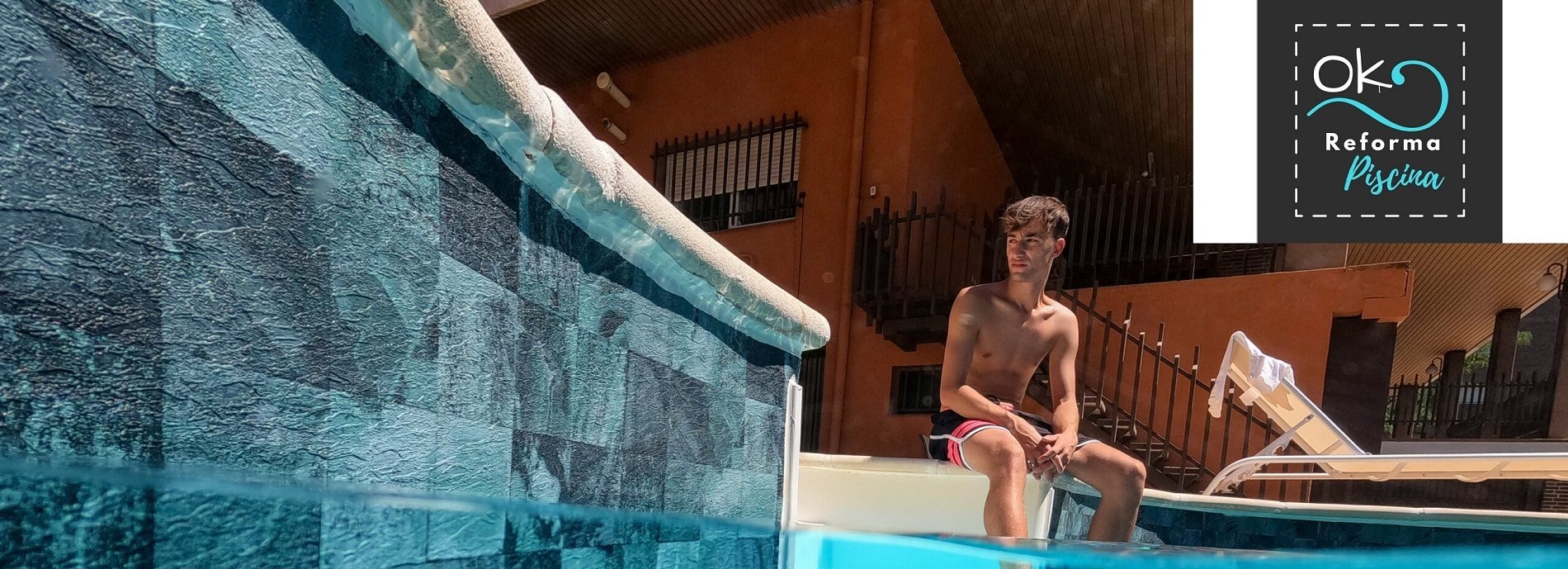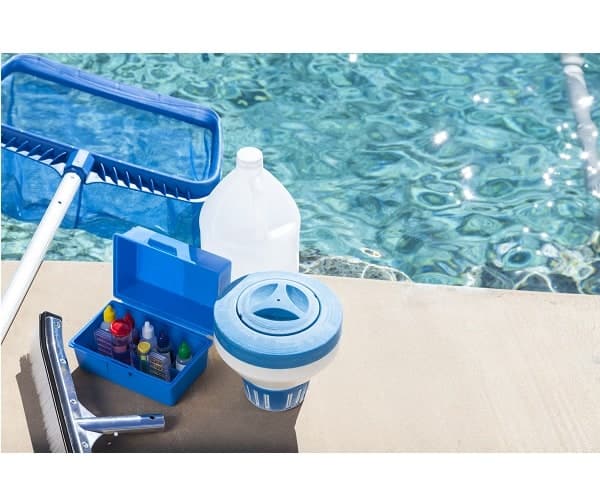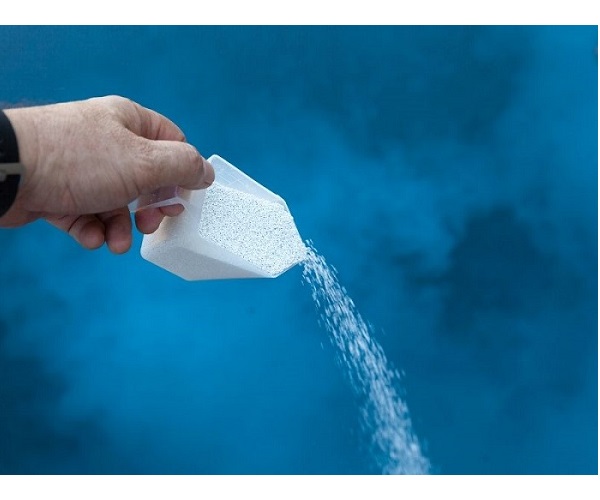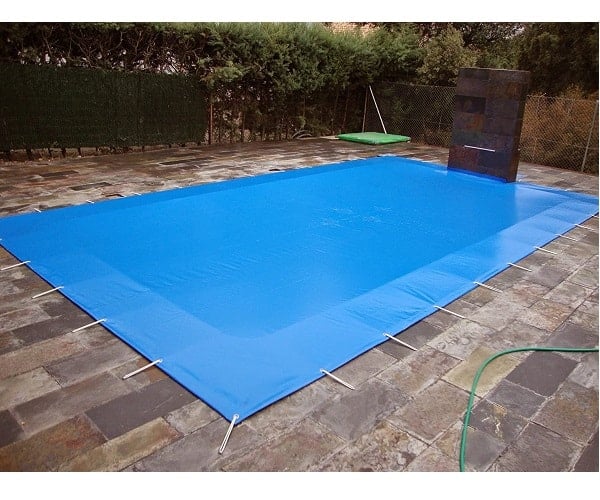
Table of contents of the page
First of all, within Ok Pool Reform and within What is salt chlorination, types of Saline Electrolysis equipment We present you an entry from How to hibernate a salt pool.
How to hibernate a salt pool

If you have a salt pool and want to protect it during the cold winter months, hibernating your salt pool is an effective way to do so.
It is important to take extra care when maintaining a salt pool during the winter season, as extreme temperatures can cause damage if not managed properly.
In this blog post, we'll give you tips on how to properly hibernate your salt pool and ensure it stays healthy during the colder months.
So, whether you're new to managing a saltwater pool or simply need some helpful tips to keep yours in good shape in the off-season, follow our guide below to successfully hibernate your outdoor oasis.

Stop using your pool at least two weeks before you plan to hibernate it
As the weather starts to cool and the days get shorter, it's time to think about hibernating your pool.
To ensure that your pool is well prepared for its winter slumber, it is best to stop using it at least two weeks beforehand.
This will prevent your pool from accumulating too much debris before you close it for the season.
Likewise, taking steps such as lowering the water level, turning off power to fixtures, and brushing off algae buildup can help protect your pool until next summer.
Put a little work now into preparing your pool in advance so that when you're ready to swim again next year, you can do so without worry or hassle!
How to hibernate a salt pool: Procedure depending on the water temperature

Steps to hibernate a salt pool when: Water temperature above 15ºC
- If the water temperature is higher than 15ºC. You must leave the equipment running for sufficient hours (the lower the temperature, the fewer filtration hours) to maintain a chlorine residual of between 0,5 and 1,0 ppm, adjusting the pH between 7,2-7,4, manually or automatically.
Steps to hibernate a salt pool when: Water temperature below 15ºC
- Electrically disconnect the electrolysis equipment and extract the chlorine generating cell. Clean it with electrolytic cell descaler to remove any scale that may have adhered to the plates. Store the chlorine generating cell in a dry place and protected from inclement weather.
- If you have pH or pH/Rx control and regulation equipment, you must carefully remove the pH and RedOx electrodes. Place them in a preservative solution, in the original case or in a glass in a dry place protected from inclement weather (The pH and Redox electrodes are subject to natural aging, even when handled properly in accordance with the intended use. give them). The expected useful life will range between half a year and a maximum of two years. Verify that during storage the pH and Redox electrodes have the 3M KCL preservative solution liquid that comes from the factory at the end of them (wetted area).. In the event of evaporation or accidental loss, pour a little 3M KCL solution into the protective cap or casing. It is essential that the protective cap or casing is always moistened with said solution. Storage conditions must be in a dry place between temperatures between 10ºC and 30ºC.
- Follow the classic hibernation treatment.
Clean the pool thoroughly, including scrubbing the walls and vacuuming the floor when hibernating a salt pool
Winterizing a salt pool is an essential part of maintenance to prevent damage to the chlorine generator and other pool equipment.
- During this season it is important to thoroughly clean the pool, as dirt and other contaminants left in the water can reduce the effectiveness of disinfection.
- For a thorough clean, be sure to scrub the walls of your salt pool as well as vacuum the floor to remove any dirt or particles that may remain.
- Doing so will help prolong the life of the salt cell and ensure you have sparkling clean water when you reopen your pool in the spring.
Balance water chemistry and shock the pool if necessary by hibernating the salt pool
Winterizing a salt pool can be a daunting task, but it is essential to ensure your pool chemistry remains balanced when temperatures drop.
- The first step in hibernation is to shock the pool with a sodium or potassium-based product, and maintain the balance of essential elements such as pH, alkalinity and calcium hardness.
- This process is especially important for salt pools that tend to become more unbalanced during the cold months.
- Observe all safety precautions: If pH is less than 7,2, chlorine levels should not exceed 5 ppm and remain below 4 ppm during shock treatment.
- Also, check your salt levels regularly and ensure they do not rise above 3000-4000ppm for optimal performance.
- In fact, proper maintenance now will ensure consistent use of your pool come spring.
Lower the water level below the skimmer when hibernating a salt pool

Winterizing a saltwater pool means more than just lowering the pH balance and disinfecting chemicals: it's also important to lower the water level below the skimmer.
- This prevents water from freezing in the skimmer, as that could cause damage to the equipment inside.
- Thus, the best way to do this is to take a wet vacuum cleaner with a long enough hose and siphon some of the excess submerged water.
- On the other hand, be sure to leave at least one or two centimeters above the skimmer slightly lowered so that you can continue to carry out routine maintenance checks and add chemicals if necessary during the winter months.
- Lowering the water level before winter arrives each year is definitely key to keeping your saltwater pool healthy in the off-season.
Remove all ladders, diving boards and other pool accessories to hibernate a salt pool

Before preparing your salt pool for the summer season, it is important that you take the time and effort to remove any items that you will not be using this year.
- This includes any ladders, diving boards, or other accessories that have been hibernating in the pool.
- These dissimilar objects can contaminate water quality by altering salt balance and pH levels, causing long-term damage to pipes, fixtures and other components.
- So, to ensure that your pool stays healthy and safe for swimming in all season long, take a day or two each spring to disassemble these pieces and put them away until you're ready to enjoy them again.
Cover the pool with a tarp or winter cover to keep out debris and animals.
Pool owners have the difficult task of ensuring that their pool remains in pristine condition all year round.
- One way to keep debris and animals away is to cover the pool with a tarp or winter cover when not in use.
- Covering the pool will keep out leaves, dust and dirt that may accumulate from wind and storms, and will also help protect you from curious critters that may enter the water.
- Truly, investing in a quality tarp or winter cover for your pool can give you peace of mind as you won't have to worry about potential damage from an uninvited visitor.





